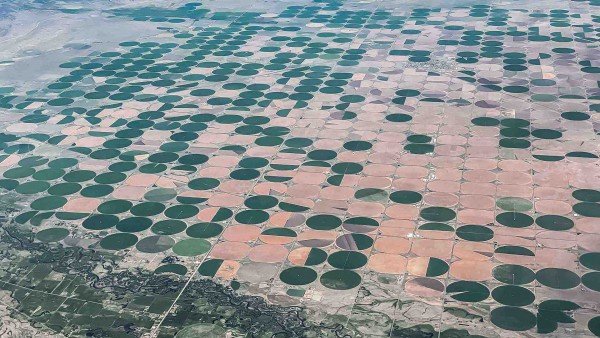GEOG to Lead Effort to Bolster U.S. Agriculture With Satellite Data
$15M NASA Partnership Establishes Consortium to Improve Food Security, Diversity in Earth Observation Industry
In a new partnership between NASA and the University of Maryland, researchers in the Department of Geographical Sciences have been tapped to lead a five-year, $15 million consortium to turn satellite data into down-to-earth, actionable information to support agriculture in the United States.
The as-yet unnamed consortium will expand upon the existing UMD-led global food security and agriculture program, NASA Harvest, with which it shares a common objective: to strengthen food security, agriculture and human and environmental resilience. Like NASA Harvest, which is entering its second five-year term, the new program will bring together experts at UMD and from private and public organizations, although zeroing in specifically on U.S. agriculture and U.S. stakeholders.
Many of the consortium’s projects will be focused on developing tools that apply satellite data to U.S. agricultural operations—like developing tools for nitrogen management, irrigation management and early disease detection—or on using the data to analyze the suitability of cover crop and reduced tillage in different agricultural landscapes for increasing soil health and resilience, said Alyssa Whitcraft, the associate research professor who will lead the new consortium.
“But a substantial amount of this money will also be going toward very different projects like working with legal scholars, farm organizations and agricultural sociologists to restructure relationships so that the value of data and technology are returned to U.S. farmers, potentially helping reduce the financial squeeze that they increasingly feel,” she said.
Karen St. Germain, director of NASA’s Earth Science Division, alluded to struggles in the agriculture sector when the consortium was announced in late October.
"There are challenges facing the U.S. agriculture system and we're very excited about this new consortium which will work with America's farmers, assisting them in using NASA earth science data," she said.
Another focus of the consortium will be on expanding Whitcraft’s work to bring scientific integrity and clear definitions to current agriculture-industry buzzwords like, “sustainable,” “climate-smart” and “regenerative.”
“There don’t quite exist clear, consensus, evidence-based definitions for these terms, much less the mechanisms to quantify their value to the environment, the farmer or society in general,” Whitcraft said. “What works in one place can’t just be picked up and dropped in a new place; the definitions of these terms and the farming practices that support them have to be flexible. We need tools that help us understand this variability, and satellite data combined with traditional place-based knowledge combine to provide powerful insight here.”
The consortium will also include experts in organizational change involving diversity, equity and inclusion with the aim of diversifying this corner of the geosciences. The team will establish and support the implementation of a strategic plan to increase recruitment and retention of underrepresented scholars in NASA programs, train the next generation of scientists in satellite earth observation and agriculture, and support new investigators at minority-serving institutions in fully and successfully participating in NASA and other federally funded research.
“We need to think about these things as a whole, integrated ecosystem. What happens here impacts there, what happens there relates to here,” Whitcraft said. “It's not just the literal, biophysical agroecosystem we have to think about, it's also the societal ecosystem, the economic system, the social justice system, the political system, and how all these things factor into who feasts and who goes hungry, what is lost and what remains.”
This article by Rachael Grahame originally appeared in Maryland Today. Photo by iStock.
Published on Tue, 11/15/2022 - 11:39


